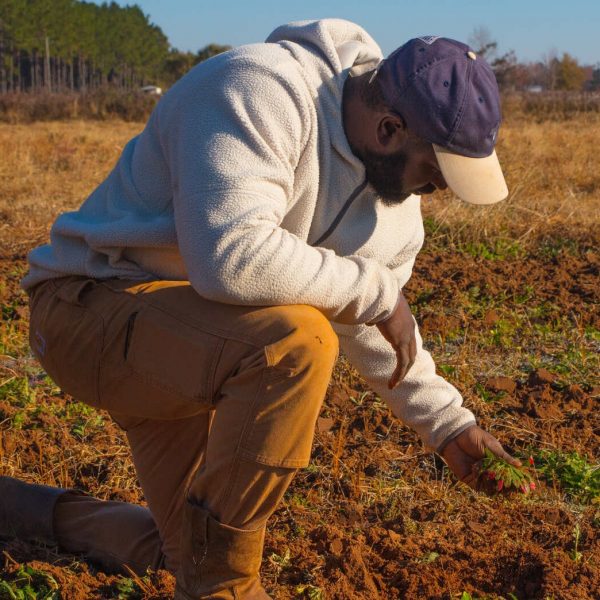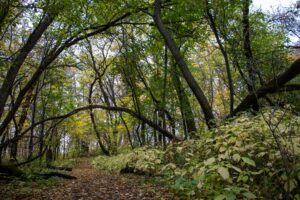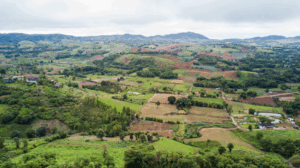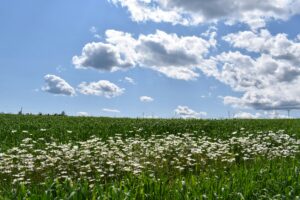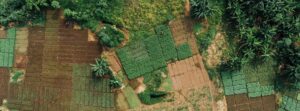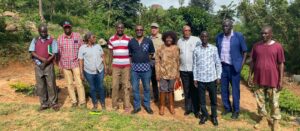Summary: We all have ways to grow. What does that look like when it comes to sustaining farming legacies across generations? In the American South, intergenerational leadership is not just a tradition—it’s a critical strategy for land retention, climate resilience, and Black farmer prosperity. Through programs like Nature For Justice’s Growing American Farmer Prosperity, families are redefining what it means to steward land collectively. Their stories remind us that the future of farming depends on both ancestral knowledge and equitable investment in the next generation.
In the American South, farming is legacy work. Land is passed down not just through deeds, but through memory—through garden rows plotted by ancestors, stories told at the dinner table, and the steady rhythm of planting seasons. But that legacy is under pressure. According to the USDA’s 2022 Census of Agriculture, the average age of American farmers is 58.1, and nearly 40% are 65 or older. Over 63% of producers are now older than 55—a demographic shift with major implications for the future of food, food security, and land stewardship in this country (USDA NASS, 2024). Meanwhile, younger farmers—especially Black and Indigenous producers—are struggling to get a foothold. Rising land costs, limited access to capital, and systemic barriers mean that even when younger generations want to stay on their family’s land, it isn’t always possible. Intergenerational leadership is no longer just a tradition and need —it’s a strategy for survival.
As the Farmer Prosperity Coordinator at Nature For Justice, I understand this challenge through both personal and professional lenses. I spent much of my childhood visiting my grandmother’s land in South Carolina—a place where family stories were woven into the lush landscape, where the garden was planted with purpose, and where land held the memory of generations.
After my grandmother passed, my grandfather and I stepped in to manage the land, renewing the family’s commitment to its preservation and future. That transition—experiencing one generation step up to honor the legacy of another—inspired me to pursue work focused on agricultural justice, conservation, and generational continuity.

My personal story informs my role at Nature For Justice, where I support BIPOC farmers in protecting and regenerating their own lands across the Southern U.S.
The Role of Programs Like Nature For Justice
Nature For Justice’s Growing American Farmer Prosperity program, launched in 2022, is responding to that very reality. By providing direct financial support, technical assistance, and peer-to-peer learning opportunities, the program empowers BIPOC farmers to adopt regenerative practices while strengthening their ability to hold onto and thrive on their land.
As part of this effort, the program has also partnered with The Soil Inventory Project (TSIP) to help farmers collect critical baseline data on soil health—an essential step in designing climate-resilient systems that work for both the environment and farm profitability. This collaboration equips farmers not only with resources but with evidence-based insights that support long-term sustainability and equity in agriculture. Rather than dropping one-size-fits-all regenerative agriculture solutions from afar, the program supports regional hubs led by trusted community members—people who know the land and the local history. This model doesn’t just build agricultural resilience; it builds trust and a knowledge and information data set for tracking outcomes. It creates space for intergenerational learning where elder farmers can pass down knowledge, and younger farmers can bring in fresh tools and perspectives.
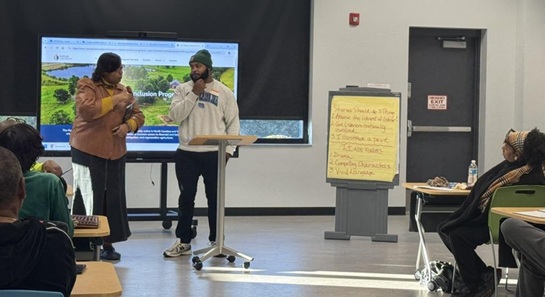
These peer networks are essential, especially in communities where formal agricultural education has been historically inaccessible. They allow for the kind of hands-on, neighbor-to-neighbor exchange that has sustained rural communities for generations. This spirit was reflected at Nature For Justice’s public speaking workshop series, where youth and elders came together to share knowledge across generations—underscoring the value of intergenerational dialogue not just in the field, but in how stories of land, resilience, and leadership are told.
SAAFON and the Power of Generational Continuity
One organization that has long recognized the importance of intergenerational leadership in sustainable agriculture is the Southeastern African American Farmers Organic Network (SAAFON). Since 2006, SAAFON has supported Black farmers across the Southeast and the U.S. Virgin Islands in transitioning to organic and agroecological practices deeply rooted in ancestral land stewardship.
Today, the network serves nearly 180 farmers across 10 states. Through on-farm mentorship, regional gatherings, and culturally grounded education, SAAFON cultivates relationships between youth and elders that go far beyond skill-sharing—they’re about collective healing and legacy-building.
One SAAFON farmer once reflected: “We all got ways to grow. What does that look like in creating relationships that sustain the work?” That question is at the heart of what intergenerational leadership demands. It asks us to slow down and listen, to recognize that growth isn’t always linear and that sometimes the most sustainable practices are the ones our ancestors already knew.
A Future Rooted in Relationship
Black farmers once owned more than 16 million acres of land in the U.S. Today, that number is closer to 2.3 million. As of 2022, Black-operated farms made up less than 1% of all farmland in the country—despite Black people representing over 13% of the U.S. population (ERS USDA, 2023; EWG, 2024). Much of this loss has occurred through heirs’ property complications and a lack of legal or financial resources to secure land across generations.
Intergenerational leadership is not just about preparing young people to take over the farm. It’s about creating the conditions for them to stay on the land in the first place by having the technical, financial, and relationships to ensure durable businesses. That means reimagining agricultural support systems, investing in peer-led networks, and ensuring that land transition happens not by default, but by design.
Small-scale farming in the South has always been a family matter. And in this moment—facing climate change, market volatility, and rising inequity—we need that family-centered model more than ever. Not because it’s nostalgic, but because it’s durable. Because it works.
Walking Forward Together
Intergenerational leadership is essential for the future of farming—not just in the South, but across the country. It allows communities to respond to environmental challenges with inherited wisdom and new ideas. It ensures that young people entering agriculture do not do so alone, but with the support of elders who understand the land not only as property, but as legacy.
Intergenerational leadership is the bridge between memory and innovation. It holds the wisdom of our elders in one hand and the imagination of our youth in the other. If we want a future where farming thrives in the South, it must be built on leadership rooted in legacy.
References
- USDA National Agricultural Statistics Service (NASS). (2024). 2022 Census of Agriculture Highlights: Farm Producers. https://www.nass.usda.gov/Publications/Highlights/2024/Census22_HL_FarmProducers_FINAL.pdf
- Economic Research Service (ERS), USDA. (2023). Charts of Note: Farm Demographics. https://ers.usda.gov/data-products/charts-of-note/chart-detail/?chartId=109325
- Environmental Working Group (EWG). (2024). More than 4,000 Black Farms Are Gone: What That Means for Agriculture and Food Justice. https://www.ewg.org/news-insights/news/2024/05/more-4000-black-farms-are-gone-and-house-republican-proposals-increase
- American Bar Association. (2022). Contemporary Relevance of Historic Black Land Loss. https://www.americanbar.org/groups/crsj/resources/human-rights/archive/contemporary-relevance-historic-black-land-loss/
- Southeastern African American Farmers Organic Network (SAAFON). (2023). Organizational Overview. https://saafon.org/

